Medical expert of the article
New publications
Diet for erosive gastritis
Last reviewed: 04.07.2025

All iLive content is medically reviewed or fact checked to ensure as much factual accuracy as possible.
We have strict sourcing guidelines and only link to reputable media sites, academic research institutions and, whenever possible, medically peer reviewed studies. Note that the numbers in parentheses ([1], [2], etc.) are clickable links to these studies.
If you feel that any of our content is inaccurate, out-of-date, or otherwise questionable, please select it and press Ctrl + Enter.
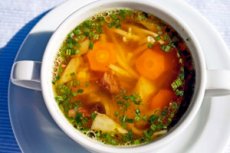
Nowadays, erosive gastritis is not such a rare stomach disease. We will talk about what kind of disease it is and how to treat it in a separate topic. And now we need to find out what nutritional principles a patient should follow, or, to put it simply, what diet is recommended for erosive gastritis.
Treatment of erosive gastritis with diet
The principles of nutrition in the treatment of erosive gastritis may depend on the complexity and phase of the disease. In the acute form, a strict diet is prescribed, and during the period of symptom relief, the diet becomes less strict.
In all cases, treatment of erosive gastritis with diet involves the complete exclusion of alcoholic beverages, fried, fatty and spicy foods, as well as quitting smoking.
The specifics of the diet are also dictated by certain characteristics of the disease: if the acidity of gastric juice increases, the diet should be aimed at reducing it, and if the inflammatory process occurs with atrophy of the mucous tissues, the emphasis should be on stimulating the function of the intact glands.
What, first of all, needs to be excluded from the menu:
- stimulants of gastric juice production (alcohol, carbonated drinks, sour juices, strong coffee, smoked and sausage products, legumes, most types of cabbage, dark bread);
- foods that aggravate the inflammatory process in the stomach (fatty meat products, radishes, mushrooms);
- dishes that are both excessively hot and from the refrigerator - food should be either warm or at room temperature;
- fried foods;
- seasonings, including pepper and salt.
What is allowed to be consumed in the treatment of erosive gastritis:
- boiled lean pieces of meat (chicken or rabbit), which are preferably served chopped;
- dietary fish varieties;
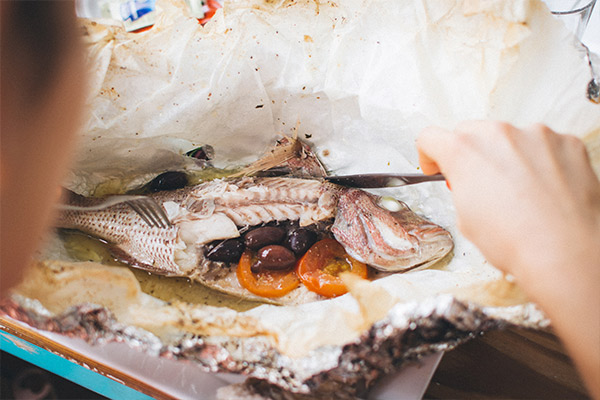
- vegetables, boiled and ground in a blender or meat grinder, brought to the state of puree or cream soup;
- well-cooked cereal porridge, possibly with the addition of finely grated vegetables or fruits;
- natural jelly (not semi-finished products), fruit and berry compotes (not sour);
- milk, homemade cottage cheese (low fat);
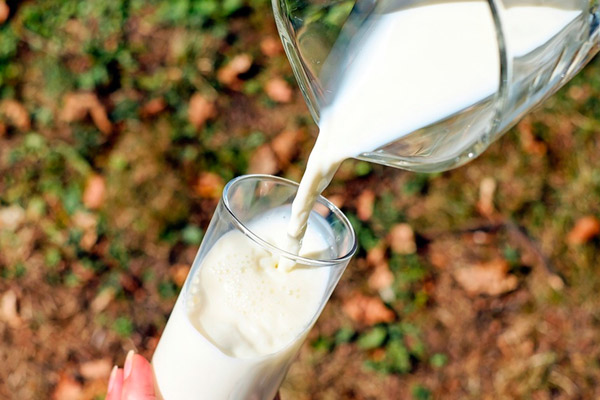
- jelly.
In case of increased acidity, sodium bicarbonate mineral waters (still) are recommended, 1 glass an hour before the main meal.
Food should be consumed in small quantities, avoiding excessive stretching of the stomach, but often, so as not to allow the feeling of hunger to appear (approximately every 3 hours).
Such dietary restrictions must be observed for at least 3 months. In addition to the diet, the patient needs rest, sufficient sleep and a favorable family atmosphere.
Diet for acute erosive gastritis
The principles of dietary nutrition for acute erosive gastritis are based on eliminating inflammation in the tissues of the stomach.
On the first day of exacerbation, it is recommended to completely abstain from food. From the second day, it is allowed to gradually introduce semi-liquid well-cooked porridges, natural jelly, boiled eggs into the menu. This is a fairly strict diet, which will gradually be softened as the acute process subsides.
You should eat fractionally, 5-6 times a day in very small portions. Meals should be cooked mainly by steaming, and also chop and mash the food as much as possible. For several days after the normalization of the inflammatory process, you can introduce biscuits, steamed omelets, non-acidic and low-fat cottage cheese, vegetable soup, dietary white meat, weak tea with milk into the menu.
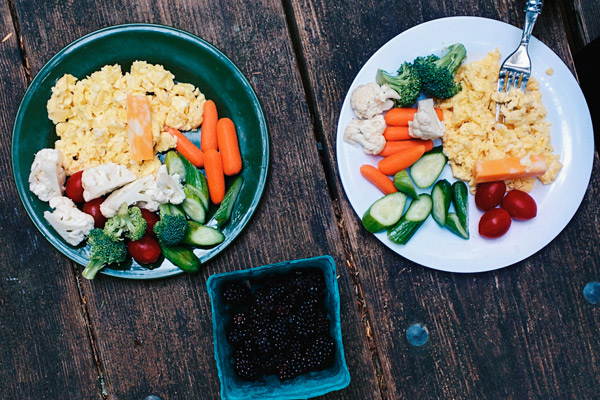
In acute erosive gastritis, a strict diet lasts 15-25 days. After the inflammatory reaction has subsided, the diet can be expanded somewhat, but you cannot completely abandon the diet. As we have already said above, to consolidate the results, the diet must be followed for at least 3 months. With increased acidity, it is allowed to gradually include vegetable oils in the menu; with decreased acidity - broths, a small amount of salt, lemon juice.
Spicy foods, bread and buns, fatty and fried foods, sauces and marinades, lard and sausages remain prohibited throughout the diet.
Diet for chronic erosive gastritis
Nutrition and diet for chronic erosive gastritis depend on the stage of the disease. During an exacerbation, a strict diet is prescribed, the same as for acute erosive gastritis. During remission, the diet is slightly expanded, but nutrition still remains fractional, with small portions of food, about 6 times a day.
It is recommended to start each morning with a glass of clean, not cold water. Food should be as gentle as possible: avoid spicy, pickled, smoked, salted and preservative-containing foods. Fruits should be eaten without peel.
Avoid butter, replace it with any vegetable oil.
Forget about sweet buns, creams and alcohol.
If stomach acid levels increase, it is recommended to:
- skim milk;
- white bread rusks;
- dishes made from liver, tongue, white meat;
- low-fat fish;
- boiled eggs;
- stewed or boiled vegetables;
- vegetable soup or puree;
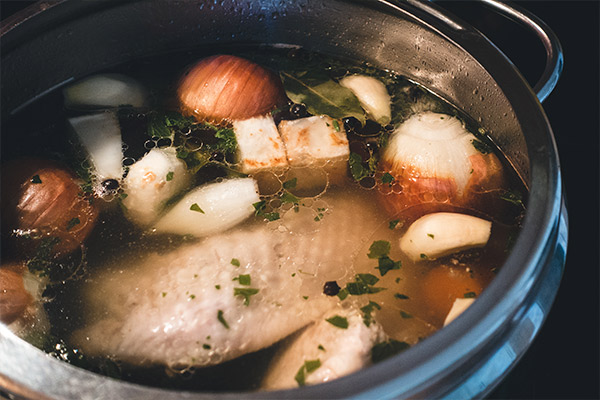
- pureed side dishes made from cereals (preferably rice, oatmeal or semolina);
- freshly squeezed non-acidic juices diluted in half with boiled water.
For low stomach acid, the following is recommended:
- broths, soups;
- fermented milk products;
- boiled and stewed vegetables;
- low-fat meat, fish;
- side dishes made from cereals without adding milk and butter (you can add vegetable oil);
- homemade jam, natural honey, dried apricots, figs, raisins (instead of dessert);
- fruit and vegetable salads;
- strong brewed tea, herbal tea is possible (chamomile, St. John's wort, lemon balm);
- dried dark bread or croutons (not made from white flour).
This diet should be followed for several months until stable remission is achieved.
Diet for erosive reflux gastritis
Erosive reflux gastritis occurs when the contents of the duodenum enter the stomach cavity. As a result, erosions appear on the gastric mucosa, which are quite difficult to cure. The reasons for this are the abuse of unhealthy food, drinks, and overeating.
Before starting treatment, it is necessary to prepare the stomach: for this purpose, fasting is prescribed for 1-2 days. During these days, it is allowed to drink only non-carbonated mineral water and weak tea without sugar. During these two days, the stomach will be able to recover and rest.
The further diet for erosive reflux gastritis will consist of frequent and small portions of food. These will be only boiled or steamed dishes, mainly vegetables, various cereals and slimy soups, ground white meat.
The duration of treatment for this disease is about 1 month.
It is imperative to exclude strong drinks (alcohol, beer, strong tea and coffee), as well as salt, spices, animal fat, fried foods, marinades, vinegar, dyes, soda and sauces. Overeating should not be allowed under any circumstances.
Diet for antral erosive gastritis
Antral erosive gastritis is a type of reflux gastritis. The name "antral" indicates that there is a lesion to a greater extent of the same section of the stomach.
The diet for antral erosive gastritis excludes the consumption of fatty meats (such meat is very difficult for the stomach to digest), as well as sour foods, including sour cottage cheese and sour milk.
In the acute period, fractional meals are prescribed, about 6 times a day. It is advisable to eat in very small quantities and in a lying position.
Prohibited: coffee, beer, alcoholic beverages, smoking, coarse and spicy food, semi-finished products, smoked meats and soda. Excluded are salt, spices, sweets (flour, ice cream and creams), onions, garlic, horseradish and mustard, as well as mayonnaise and ketchup.
The main goal of such a diet is to stimulate stable production of gastric enzymes and relieve the stomach walls from the mechanical effects of food.
In general, nutrition for lesions of the antral part of the stomach is not much different from the diet for erosive reflux gastritis.
 [ 6 ]
[ 6 ]
Diet for erosive hemorrhagic gastritis
Erosive hemorrhagic gastritis occurs with periodic bleeding, which is associated with damage to the vascular walls in the gastric mucosa. The difficulty in treating this form of erosive gastritis is that the erosive surfaces can bleed until the erosion is completely healed. But even after this, it is far from always possible to say with certainty that the disease is cured.
Drug treatment of erosive hemorrhagic gastritis will not be effective unless you change your lifestyle and review your diet.
A diet for erosive hemorrhagic gastritis is the basis for a quick recovery. The patient must completely give up fried, canned or pickled foods, as well as spices, salt and smoked foods. Sweets, baked goods, white bread, cocoa, coffee, alcoholic and carbonated drinks, sour fruits and berries are prohibited.
What should the diet consist of? The menu should include light dishes that do not burden the stomach:
- vegetable soup;
- oatmeal, as well as buckwheat, rice and pearl barley;
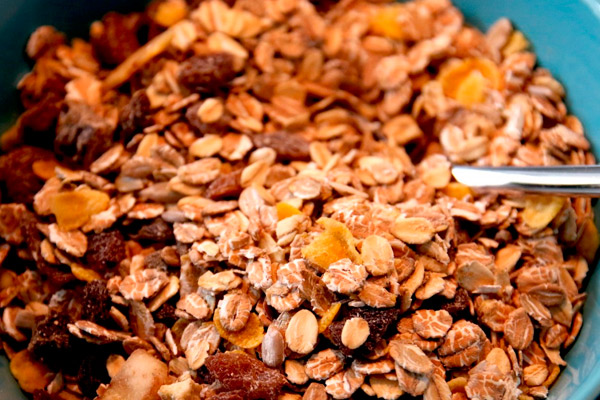
- vegetable puree with vegetable oil;
- vegetable and herb stew;
- fresh fermented milk products (low-fat cottage cheese, kefir).
Steamed or boiled fish or eggs are excellent protein foods. As for eggs, they can be eaten raw, soft-boiled or steamed into an omelette.
To replenish blood loss, it is recommended to eat liver dishes and bake sweet varieties of apples.
Great attention is paid to the daily routine and food intake. It is necessary to eat 6 times a day in small portions. Products should be chopped as much as possible, and during meals - chewed well, so as not to damage the mucous membrane of the diseased stomach with unchewed pieces.
Instead of tea, it is recommended to drink herbal infusion, adding a small amount of oak bark, St. John's wort or chamomile to it.
Diet menu for erosive gastritis
We present to your attention an approximate menu of a diet for erosive gastritis for seven days.
Monday.
- Breakfast. 2 soft-boiled eggs, a cup of weak tea with crackers.
- Snack. Banana.
- Lunch. Celery puree soup, steamed meatballs, rosehip tea, crouton.
- Afternoon snack. Berry and fruit mousse.
- Dinner. Steamed sea fish fillet with potatoes.
- A glass of kefir at night.
Tuesday.
- Breakfast. A bowl of oatmeal with honey, chamomile tea.
- Snack. Biscuits, jelly.
- Lunch. A bowl of cereal soup, fish cutlets, a cup of fruit compote, a rusk.
- Afternoon snack. Berry soufflé.
- Dinner. A plate of meat stew.
- Yogurt at night.
Wednesday.
- Breakfast. Steamed cottage cheese pancakes, a cup of compote.
- Snack. Sweet pear.
- Lunch. Vegetarian beetroot soup, chicken fillet with vegetables, toasted bread, herbal tea.
- Afternoon snack. Baked apple.
- Dinner. Buckwheat garnish with liver, tea.
- At night – a glass of tea with milk.
Thursday.
- Breakfast. Steamed omelette, plum jelly.
- Snack. A handful of dried apricots.
- Lunch. A portion of rice and potato soup, fish and vegetable casserole, a rusk, weak tea.
- Afternoon snack. A glass of compote with dry biscuits.
- Dinner. Vegetarian pilaf, a piece of toasted bread, herbal tea.
- Before bed – a glass of fermented baked milk.
Friday.
- Breakfast. Cottage cheese and berry casserole with jam, tea.
- Snack. Berry mix with yogurt.
- Lunch. A bowl of tomato soup, a steamed cutlet with pearl barley, a glass of prune compote, a piece of toasted bread.
- Afternoon snack. Cottage cheese with low-fat yogurt.
- Dinner. A piece of boiled fish with vegetables, a crouton.
- Before bed – a glass of kefir.
Saturday.
- Breakfast. Lazy dumplings with low-fat yogurt, a cup of weak tea.
- Snack. Fruit soufflé.
- Lunch. Pearl barley soup, carrot and beetroot cutlets with boiled fish, a glass of compote, a crouton.
- Afternoon snack. A handful of any dried fruit.
- Dinner. Fish and vegetable casserole, weak tea, a piece of toasted bread.
- Yogurt at night.
Sunday.
- Breakfast. Rice pudding, compote.
- Snack. Sweet apple.
- Lunch. Beetroot soup, steamed chicken cutlets, boiled potatoes, weak tea, crouton.
- Afternoon snack. Biscuits.
- Dinner. A portion of vegetable side dish, boiled fish, a piece of toasted bread, a cup of herbal tea.
- Before bed – tea with milk.
Diet recipes for erosive gastritis
Here are a few recipes to add variety to the weekly menu outlined above.
- Apple pudding for breakfast
We will need: half a glass of apple juice, 5 yolks, 300 ml of milk, 100 g of sugar, 25 g of gelatin.
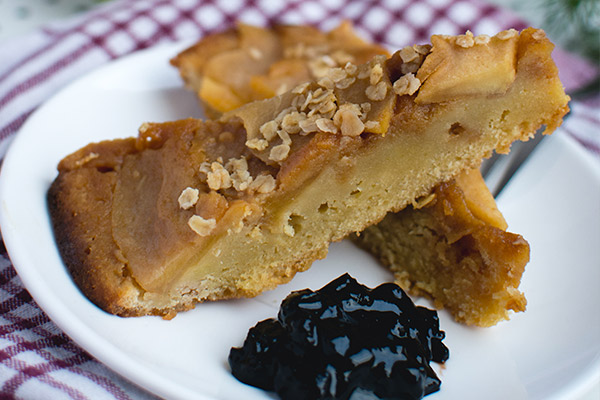
Add gelatin to apple juice and leave for half an hour. Meanwhile, beat the yolks, put the milk on the stove, bring to a boil. Add sugar, mix. After that, add juice with gelatin to the milk, and finally - yolks. Stirring constantly, cook on low heat for 15 minutes. Turn off the heat, pour the mixture into molds and put in the refrigerator to harden for 8 hours. If you cook the pudding in the evening, then by morning an unusual and healthy breakfast will be ready.
- Meatballs with milk sauce
We will need: 0.5 kg minced chicken, onion, 3 slices of bread, 200 ml milk, 2 tablespoons flour, 3 tablespoons vegetable oil, herbs.
Grind a small onion and bread into minced meat.
Separately prepare the sauce: pour 1 tablespoon of flour into a frying pan, add vegetable oil, stir, pour in milk, cook for about 10 minutes.
Make meatballs from the minced meat and put them in the sauce, simmer until done (~35 minutes). Sprinkle with herbs when serving.
- Vegetable couscous
We will need: 3 tablespoons sunflower oil, 200 g pumpkin pulp, one sweet bell pepper, 1 small zucchini, 250 ml water, 150 g couscous, 1 small onion.
Wash the zucchini, pepper and pumpkin pulp, clean out the pepper in the middle. Chop the vegetables together with the onion into small cubes and simmer over low heat. Boil 250 ml of water in a separate pan, pour boiling water over the couscous, add a tablespoon of sunflower oil and let it swell for about 5 minutes. Then combine the couscous and vegetables. Simple and delicious.
 [ 7 ]
[ 7 ]
Reviews of diet for erosive gastritis
According to the general opinion of all patients suffering from various forms of erosive gastritis, nutrition is the most important component of the treatment of the disease. Although, of course, the best effect can be achieved only by using several types of treatment in combination: drug therapy, diet therapy and folk methods - phytotherapy. However, all these methods should be discussed with your doctor: corrections to the treatment regimen are possible in each specific case.
In therapeutic measures aimed at eliminating gastritis, properly selected nutrition and diet can play a decisive role in the epithelialization of erosions on mucous tissues.
The fact that a diet for erosive gastritis really helps is proven everywhere. Moreover, everyone knows that often it is improper nutrition that initially causes gastritis. Therefore, diet correction plus a healthy lifestyle will definitely lead to the disappearance of unpleasant symptoms and a speedy recovery.

